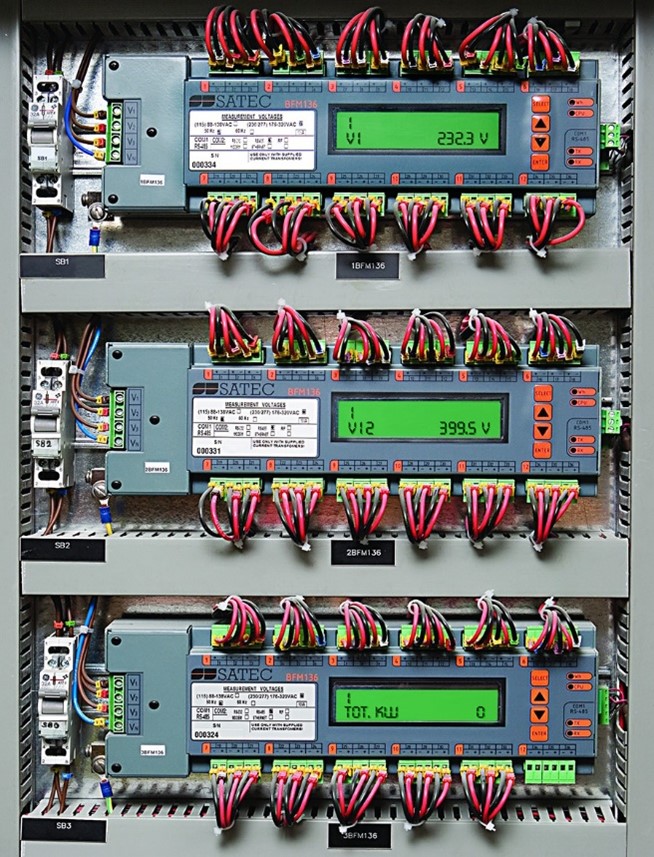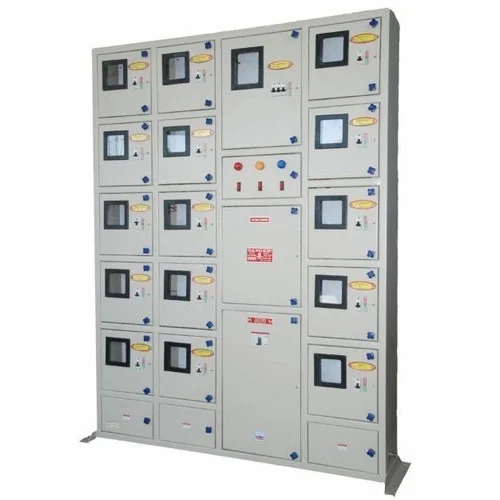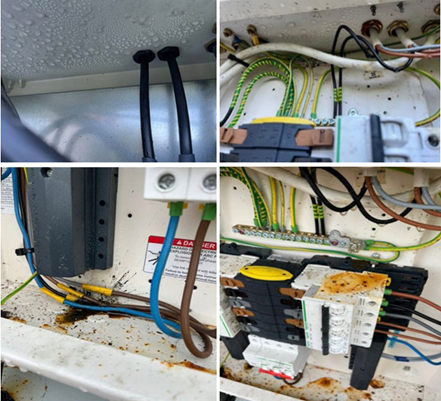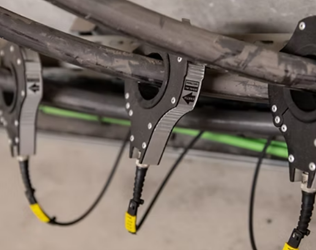The DC metering is widely used in many applications such as EV charing stations, data ceneter and pv power pv power generation and so on.
DC Metering for DC Electric Vehicle Charging Stations
1. Real-time monitoring of charging process:
The primary application of DC ammeter is to monitor the electric energy consumption during the charging process of electric vehicles in real time. By connecting to the DC power supply at the charging station and the electric vehicle, the DC meter can accurately measure current and voltage, and monitor charging rate, power input and charging time in real time. This provides users with real-time visibility into the charging process, allowing them to plan trips and manage energy costs more efficiently.

2. Electric energy billing and settlement:
DC electric vehicle charging stations usually adopt a billing method based on electric energy consumption. The application of DC ammeter in this link is very critical. It records the electric energy provided to electric vehicles by the electric vehicle charging station and provides a basis for subsequent electricity billing. By accurately measuring energy flow, DC meters ensure that charging stations can provide users with accurate electricity bills, promoting a fair and transparent billing system.

3. Trouble diagnosis and maintenance:
DC meters also bear the responsibility of fault diagnosis and maintenance. By monitoring the power input and output of electric vehicle charging stations, DC meters can detect possible problems with charging equipment. Any abnormal energy flow may indicate equipment failure or other problems. This provides operation and maintenance personnel with timely alerts and fault diagnosis information, allowing charging stations to be maintained and repaired more quickly, improving equipment availability.
4. Charging station load management:
In order to effectively manage the energy demand of electric vehicle charging stations, DC meters are used to track the load conditions of the charging stations. By monitoring power consumption in real time, charging station managers can optimize energy distribution, rationally plan the use of charging piles, prevent overload or imbalance, and ensure efficient operation of charging stations.
DC Metering for DC Distribution – Microgrids

As an important part of the future energy system, microgrids are distributed and intelligent, which pose new challenges and demands to the power system. In microgrids, DC meters play a key role as the core equipment for power measurement and monitoring.
1. Energy flow measurement and real-time monitoring:
The primary task of DC meters in microgrids is to measure and monitor the flow of energy. By connecting to various nodes in the microgrid, DC meters can accurately measure the DC energy flow at each node. This includes direct current generated by solar photovoltaic panels, charging and discharging of energy storage systems, the output of micro wind turbines, etc. The real-time monitoring function of the DC meter provides real-time power data for the microgrid, which is helpful for intelligent dispatching and management of the microgrid.

2. Load management and optimization:
Load management in microgrids is crucial to improve energy efficiency. DC meters are used to monitor the energy consumption of each load in the microgrid. By collecting energy data in real time, DC meters help microgrid managers understand the power consumption patterns of loads and achieve intelligent management and optimization of loads. This helps balance energy supply and demand in the microgrid and improves the overall efficiency of the system.
3. Battery status monitoring and optimized charging and discharging:
The battery energy storage system in the microgrid is a key component for its stable operation. DC ammeter is used to monitor the charging and discharging status of the battery, including current, voltage, charging and discharging efficiency, etc. Through real-time monitoring, DC ammeters support microgrid managers to intelligently control the charge and discharge of batteries, which helps improve the utilization rate of energy storage systems and extend battery life.
4. Data reporting and analysis:
DC meters are responsible for collecting, storing and analyzing the power data of the microgrid. This includes the overall energy consumption of the microgrid, power generation and consumption data of each node, energy efficiency, etc. By analyzing these data, microgrid managers can formulate more scientific and reasonable energy management strategies and provide decision support for microgrid scale expansion and equipment upgrades.
DC Metering for DC Data Center

1. Smart home energy management system:
In smart homes, the application of DC meters makes home energy management more intelligent and efficient. The DC meter can monitor the power consumption of various electrical devices in the home in real time and transmit this data to the smart home system. Through the smart home control center, users can remotely view real-time energy consumption data, set energy usage goals, formulate plans to switch on and off electrical appliances at regular intervals, and adjust power consumption patterns according to electricity prices at different times. This intelligent energy management system not only provides convenience to users, but also helps reduce energy costs and improve energy efficiency.
2. Electric transportation and charging infrastructure:
The application of DC metering in electric vehicle charging stations is the key to promoting the development of electric transportation. Through the DC meter, the charging station can accurately record the charging time, energy consumption and charging efficiency of each electric vehicle. This provides users with detailed charging information, while also supporting charging stations for electricity billing and management. In addition, DC meters can monitor the operating status of charging equipment in real time, helping charging station managers perform equipment maintenance and troubleshooting to ensure efficient and stable operation of charging facilities.
3. Industrial production lines and energy monitoring:
In industrial production lines, the application of DC metering helps to realize energy monitoring and management of equipment and machinery. By connecting to various devices on the production line, DC meters record the energy consumption of each device. This allows factory managers to analyze energy consumption in production lines and identify issues of energy waste and inefficient energy use. Based on this data, factories can optimize equipment operation plans, adopt energy-efficient production processes, and upgrade equipment when needed, thereby improving production efficiency and reducing energy costs.
DC metering for photovoltaic power generation
With the promotion of clean energy, photovoltaic power generation, as a form of renewable energy, has received widespread attention. In photovoltaic power generation systems, DC meters play an important role. They provide support for the efficient operation of photovoltaic power generation by accurately measuring and monitoring the generation and consumption of DC power. The following is the detailed application of DC meters in photovoltaic power generation.
1. Solar photovoltaic panel output measurement:
The primary task of a DC meter in a photovoltaic power generation system is to measure the DC power generated by solar photovoltaic panels. By connecting to the photovoltaic panel output circuit, the DC meter can accurately measure the current and voltage generated by the photovoltaic panel and monitor the solar power generation efficiency in real-time. This provides basic data for system operation, helping to understand the performance of the photovoltaic power generation system and optimize power output.
2. Power generation efficiency analysis and optimization:
The DC meter supports the analysis and optimization of power generation efficiency by monitoring the output of the photovoltaic power generation system in real-time. It can record the power generation of the photovoltaic power generation system under different lighting conditions and provide real-time power generation data. This helps system managers identify potential efficiency bottlenecks and formulate reasonable operating strategies to improve the overall performance of the photovoltaic power generation system.
3. Energy flow measurement and recording
The energy flow relationship in the photovoltaic power generation system is complex, including photovoltaic panel power generation, electric energy transmission to the inverter, transmission to the power grid or energy storage system, etc. DC meters accurately measure the flow of energy and record the flow of energy at each node in the system. This helps system managers gain insights into how energy is distributed within the system and improves the overall efficiency of the system.






